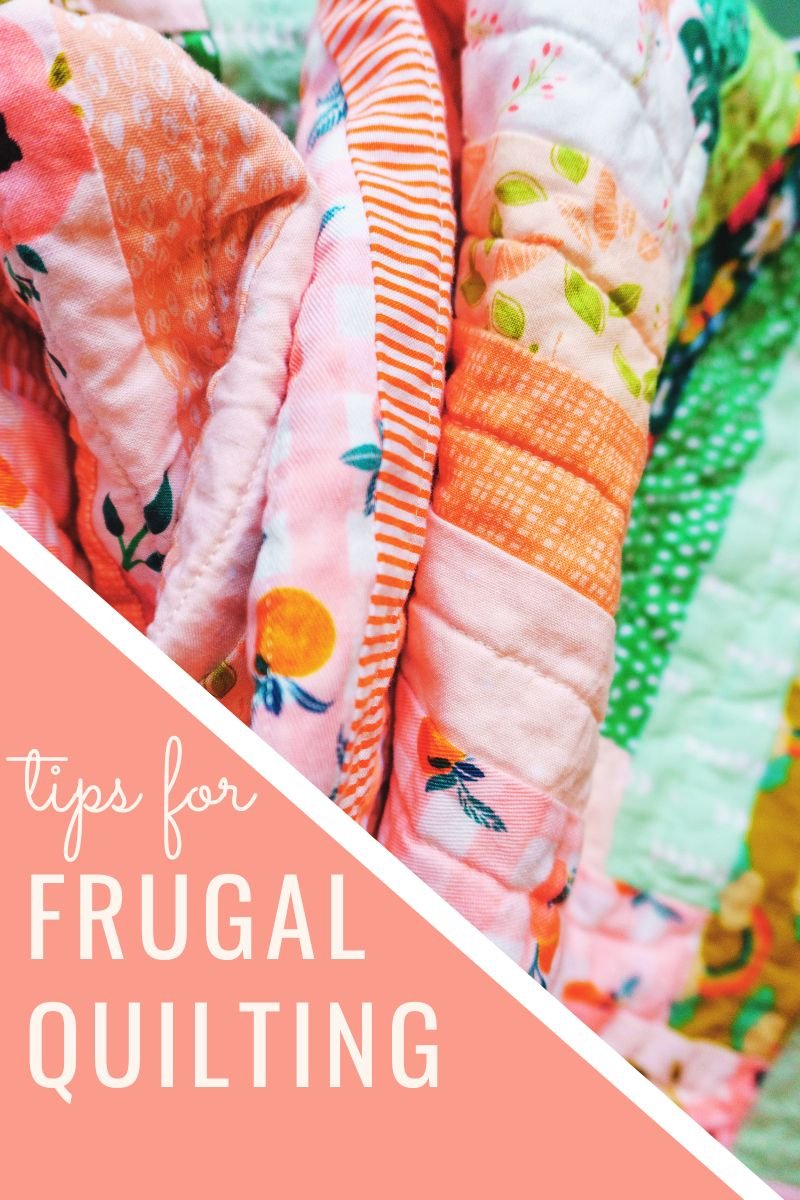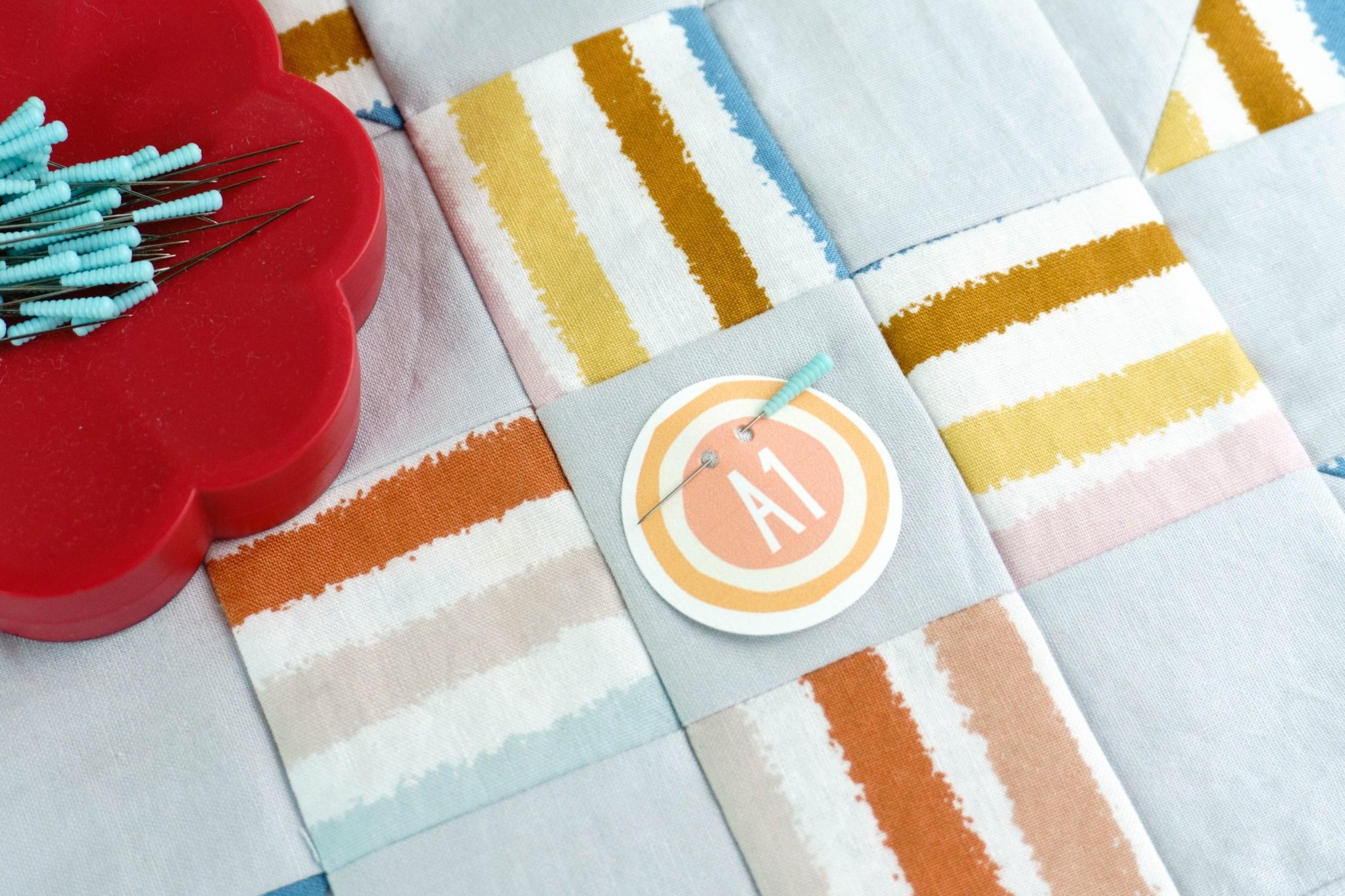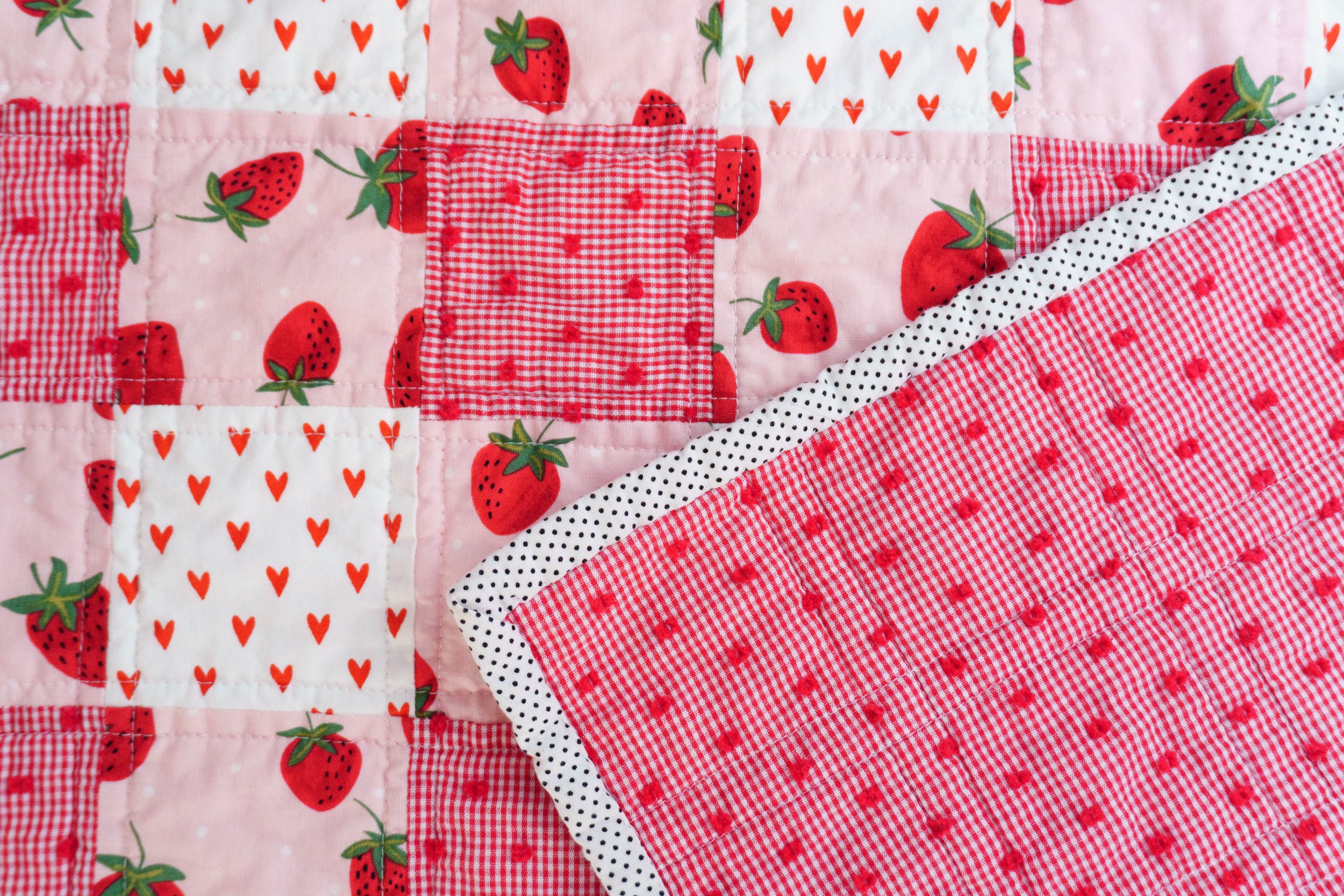How to Make Quilting More Affordable
I recently polled my Instagram followers asking if they think quilting is an expensive hobby and 90% said YES, they think quilting is expensive. I was surprised by this because the history of quilting is one of frugality and making-do, if we think about it, so to hear that quilting has morphed into something that most people think has to cost a lot of money made me want to address this issue at length.
Has quilting become a hobby that’s too expensive for most people? Is it possible to quilt in a frugal way? How can we make quilting cost less and still bring joy to our lives? Let’s talk about it!
If you’d like to watch the video I made on this topic instead of reading, skip to the end or click here to watch!
How to Make Quilting Cost Less Money
I’m a frugal person and always have been. Part of the joy of sewing for me has always been the creativity that is born out of necessity. Some of my best projects have resulted from the times when I’ve had to make do with fabrics or materials that I already had on hand! Here are some ways I’ve managed to keep the costs of quilting down:
Be aware of how you’re being influenced.
This is my first tip because I think if there’s one thing that has made us feel quilting is expensive, it’s consuming quilting content on Instagram and other social media platforms. Many of the quilting influencers are not just quilting hobbyists, they’re in the quilting business. This means that they are probably designing fabrics or quilt patterns, or they may be working with fabric manufacturers and therefore they have access to fabrics and materials that the rest of us don’t, but then we start to see them as must-haves. Instagram can be such a breeding ground of comparison and discontent!
If you’re following any of the fabric shops or quilt designers on social media, be aware of how the constant output of new fabrics lines and patterns is affecting you. Do you feel inclined or even pressured to keep up with the latest in fabrics and supplies? If so, it’s time to switch this up. Let yourself be deinfluenced! Unfollow those accounts for awhile and look instead for quilters who use hashtags like #frugalquilting or #scrapquilts or things like that.
And if you are watching YouTube channels and are becoming disheartened by those perfect sewing studios they may have, with the perfectly coordinated bolts of fabric as their backdrop, consider unfollowing for awhile. You can always check back in when you’re in a better frame of mind. If any account is breeding discontent in you, it’s time to rethink social media and curate who you’re following online. Be very aware of how you’re being influenced.
Think scrappy
Scrap quilting is probably the number one shift in thinking about quilting that can make your hobby cost a ton less money. Retrain your brain to think more scrappy and less coordinated when you’re planning your quilt projects.
I can’t tell you how many times I’ve had the quilting bug and opened my fabric drawer and managed to pull plenty of fabrics that coordinate well enough with each other to be made into a quilt. Learning to put fabrics together is so much fun! I would argue that prepackaged fabric collections make for more boring quilts anyway. So don’t think you need that fat quarter pack or jelly roll when you can likely create a great collection of fabrics with what you already have on hand.
And when saving inspiration on Pinterest or online, keep your searches to scrap quilts. Learn to see them as jumping off points, not exact guidelines. Then you’ll be able to go your own way with the materials you have available to you without spending money on more.
You probably don’t need a pattern
There are so many super talented quilt designers online, and while I fully support them and believe they earn what they charge for patterns, if money is an issue, you can often make something similar to some of these quilts without purchasing a pattern.
For example, I recently saw a quilt designer selling a pattern in which she did use a very creative color palette of solids for the blocks and an interesting print for sashing, but the quilt block itself was a basic Ohio star. This is a very basic and old quilt block for which there are multiple tutorials out there for free. So before you spring for a quilt pattern, look at it closely. Is it something you really need a pattern for, or can you probably make something like it without the pattern?
I made the quilt top below after seeing a pretty quilt pattern on Pinterest. At close inspection, I realized it was simply half square blocks turned every which way. I definitely didn’t need a pattern for that!
A good book of basic quilt blocks can carry you far in this endeavor. I have one from the 90’s with a ton of quilt blocks, from basic to complex. And for all the basic quilt blocks with beginner friendly instructions, I recommend Sew a Row Quilts. If you have one great book of blocks in your sewing room, you can make countless blocks! I find plenty of these books at used bookstores, but your library is a great resource for quilt ideas and patterns too, they always have tons of quilt books there.
Think small
You do not have to make large quilts to be a quilter! I make so many quilted items that are not big quilts and I love these kinds of small quilt projects. One of the most popular posts I’ve ever written is a roundup of small quilt projects, so if you need some inspiration, head over and read that.
From mini quilts to coasters, table runners, bags and pouches, even journal covers, there are tons of small things that can scratch that quilting itch without costing anything at all, since most people have some scraps of fabric around to make something small with.
Get creative when sourcing fabrics
When I polled my Instagram followers, I also asked for their frugal quilting tips and many people said that they purchase cotton sheets at the thrift store to use for quilts. This is something I have always done too, but I don’t stop with sheets!
I always shop the entire linens section and many thrift stores have fabrics too, sometimes hanging and sometimes bundles together in bags. I also head to the skirts and dresses where I shop for nice cottons and linens that can be turned into quilting fabrics. I love finding linen garments in interesting colors! The mens shirt section can unveil lots of good cottons too. I do recommend sticking with cotton and linen, not polyester. Not only is it hot and sweaty, if can pill over time, which isn’t what you want for your quilts.
Speaking of cutting up clothing, be sure and raid you own family’s giveaway bag before donating for things you can repurpose for your fabric stash!
One of my oldest quilts is the picnic quilt I made out of jeans and vintage tea towels, then backed with a cotton tapestry I’d gotten on extreme clearance from Urban Outfitters.
Batting and Backing
Batting and backing are the one part of quilting that can get pricey, but you can still make it cheaper with some creativity. Some people use thrifted blankets or flannel sheets as batting. I purchase batting at the fabric store, but I always use a coupon. I also buy it larger than the current quilt I’m making so that I have extra yardage for the next quilt, or for smaller projects. If the leftover piece isn’t quite the right shape, you can piece the batting together by zig zagging the edges together (I demonstrate this in the video!)
For backing, you have lots of options. Cotton sheets are really great for backing quilts, of course, since they’re already large enough to cover the whole quilt. Alternatively, I often piece fabrics together for backing, or I find some yardage I like on clearance. I’ve made many pieced together bindings as well!
If you have any frugal quilting tips to add, I hope you’ll chime in. There have been a TON of great comments on the video version of this article, so head over to YouTube and read those and add yours if you have any!
And for one last bonus tip, the cheapest way to quilt is of course to do it be hand! You really don’t need very much equipment to enjoy quilting, as our ancestors have proven in times past. Quilting by hand is fun and relaxing and once you get the hang of it, is much faster than most people probable think.
Happy Quilting!
Love, Nikki

















